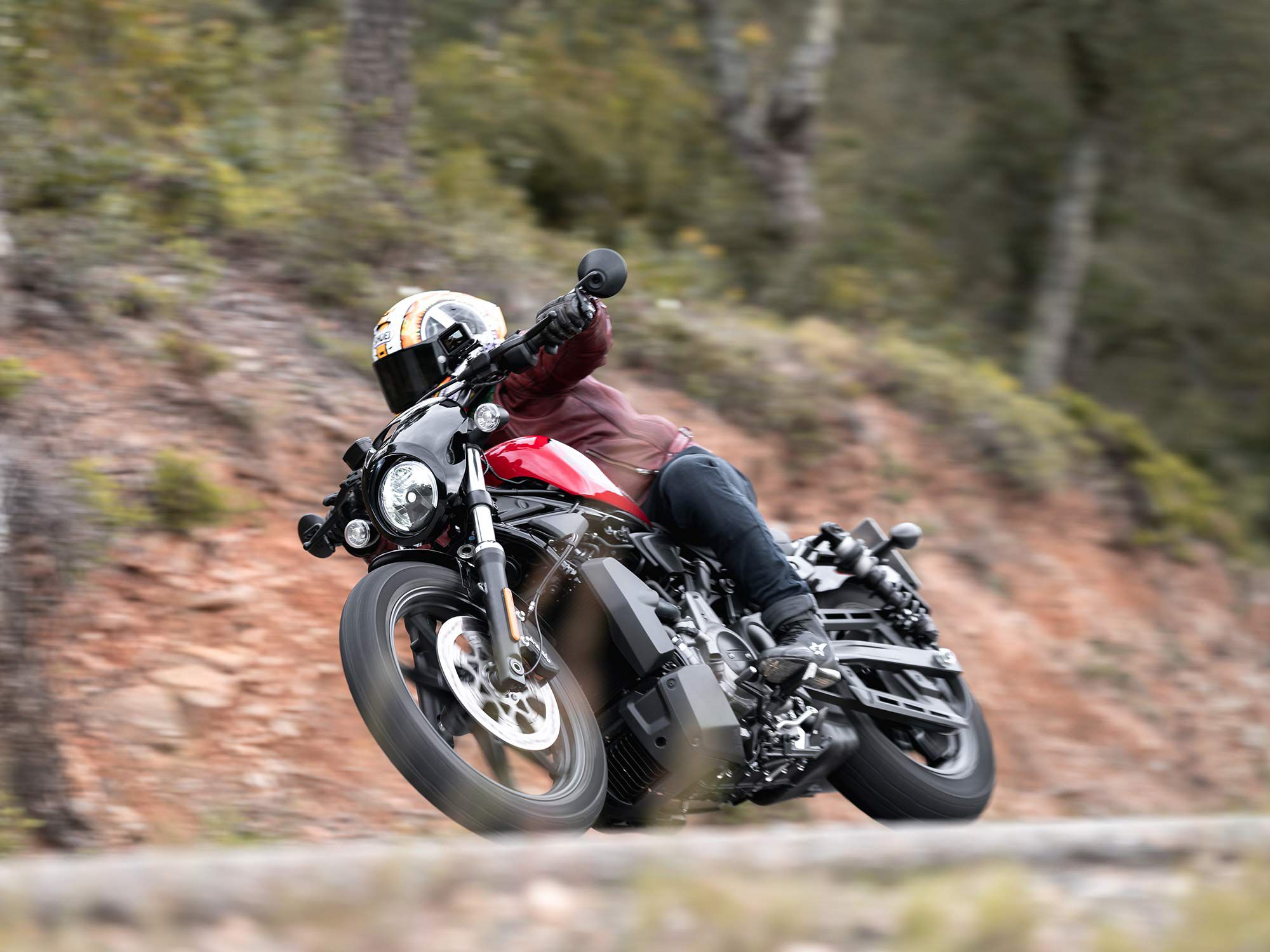
Without ever-tightening emissions regulations nudging air-cooled motorcycles toward extinction, the much-loved but long-toothed air-cooled 883 and 1200 Sportsters would probably have gone on forever. But now, 65 years after the first XL hit the streets, Harley-Davidson replaces its iconic war horses with an entry-level V-twin for the next generation—the Nightster.
The liquid-cooled Nightster offers a significant leap in performance over both air-cooled Sportsters. A peak power figure of 89 hp and a 9,500 rpm redline are numbers the old air-cooled machines could only dream of. In fact, that’s 80 percent more muscle than the old 883.
But it’s not just about the engine (whose liquid-cooling will certainly ruffle the feathers of air-cooling enthusiasts). The Nightster comes with a new frame, Showa suspension, multiple electronic riding modes, traction control, and ABS. And while the design may shadow the lines of previous Sportsters—19-inch front and 16-inch rear wheels included—what looks like the fuel tank is actually a cover for the airbox, with the real (3.1-gallon) fuel tank stowed under the seat.
We flew to northern Spain ahead of the bike’s official European launch for an exclusive test ride on Harley’s entry-level V-twin streetbike.
With 90 hp at 7,500 rpm and 70 pound-feet of torque at 5,000 rpm, the Nightster makes a significant jump forward compared to even the larger air-cooled Sportster 1200, which churned out 66 hp.
The 975cc V-twin (975T) is essentially a detuned and downsized version of the 1,252cc Revolution 1250T engine found in the Sportster S and Pan America. This is done via a smaller 97mm bore and shorter 66mm stroke (down from 105mm and 72.3mm, respectively). There are also changes to the intake and exhaust, with variable valve timing now only on the intake side, plus three riding modes to choose from: Sport, Road, and Rain. Each mode reconfigures the rider aids, while Rain mode reduces peak power by around 15 percent.
I immediately felt at home on the Nightster. The gearbox is fluid, not like the clunky transmission of old, and both levers are span adjustable, not the huge chrome levers we are used to. In fact, there’s a modern, integrated feel to the package. The fuel injection, however, is a little sharp and snatchy for low-speed riding, and miles and a thoroughly warmed motor didn’t overly improve matters. And while the Nightster’s fueling can’t be described as bad, it’s not in the same league as that on KTM’s and Ducati’s current V-twins, and in Sport mode the throttle response is intrusively snatchy.
Fueling aside, the 975cc V-twin impressed throughout our test ride. On the one hand, you can ride this cruiser like a traditional Harley, short-shifting through that easy gearbox, enjoying the 975T’s torque, and riding progressively and relatively briskly. Or if you’ve come from a sport background, hold onto a gear and let it rev. Peak power is at 7,500 rpm, max torque at 5,000 rpm, but the Nightster will rev on to 9,500 rpm—and it appears to enjoy it. The kick between 6,000 rpm and 8,000 rpm is a welcome addition for sport fans—yes, the Nightster is sporty in a way the Sportster never managed.
Accelerating out of slow corners or roundabouts is now great fun. Turn off the TC and there is enough torque to light up the rear tire, just, and it will continue accelerating past a displayed 100 mph with a degree of nonchalance. What’s more, there’s handling to match.
Harley has saved weight (the 1200 Sportster weighs 582 pounds compared to the Nightster’s 481 pounds) and, interestingly, moved the center of gravity lower with the fuel tank now under the seat and the traditional tank shape just a cover for the airbox. H-D has also listened to criticism and improved ground clearance. The old, discontinued Sportster could never objectively be described as sporty because its handling limitations, especially the lack of ground clearance, were all too easy to find. Now, those limitations have been attended to, and while the pegs and eventually the exhaust will touch down, it takes some determination to do so.
Of course, this is no track bike, but the combination of 19-inch front and 16-inch rear wheels and 481 pounds somehow works. The Nightster is slow steering by normal standards, especially during fast direction changes at speed, but this is only noticeable when riding outside the bike’s design window. For a spirited ride, it’s hard to fault—its newfound agility and easy-to-achieve lean are both attributes alien to most Harleys. Add this much-improved handling to the flexibility of the engine, and the result is a truly sporting entry-level Harley.
Less convincing are the Harley-Davidson-badged Dunlop tires, which will probably last forever but on the hard side for a brisk ride. Grip wasn’t an issue in the dry at least but, when you’re riding sportily, the rubber does lack outright feel. But TC and ABS come as standard should you get a little carried away.
The single Brembo stopper is just about up to the job, and there’s a nice, progressive feel to the brakes. The back brake is strong, and there’s Drag-Torque Slip Control System (DSCS), or engine-brake assist to me and you. Most of the test was on tight twists and turns meaning I didn’t get the opportunity to try the brakes from high speeds and the ABS is not lean-sensitive and is relatively basic—at times I could feel it actuating but this wasn’t alarming.
The Nightster comes with a switchable traction control system and engine-braking control system to prevent rear-wheel lockup on downshifts. None of these electronics are lean-sensitive either and, for the asking price, I was certainly expecting cornering ABS, which now comes on many smaller-capacity bikes.
In terms of comfort, the Nightster is impressive. The ride quality is pleasant despite a lack of sag in the short-travel rear suspension, and the nicely balanced riding position appeared to accommodate most of the human shapes and sizes riding on test, though a screen would be needed for serious touring—and there’s no cruise control either.
Fuel consumption is quoted at 45.8 mpg, enough for a potential range of 142 miles from the 3.1-gallon fuel tank. We didn’t get to measure the range during the test as we couldn’t visually confirm that the underseat fuel tank was full before setting out for the day. Apologies.
Verdict
We have not touched on the all-important Nightster look. Traditionalists may disagree but, up close and personal, I like the overall style and how easy it will be for owners to customize, but it’s a shame about the low quality of one or two fasteners.
This is a big step for Harley, though, particularly the fun and versatile engine, which is happy to play the easygoing role one minute and be an engaging rev-happy sportbike the next. It’s the same verdict for the handling, which is much improved over the old Sportster, and one of the best handling Harleys I’ve ridden. The fueling is average compared to the best V-twins on the market, and certainly don’t opt for the Sport mode at slow speeds. The rider aids are a welcome addition but should arguably be lean-sensitive.
The new Nightster performs in a different league to the old air-cooled Sportster range and should be a hit with new Harley customers, but at more than $13K it’s not a cheap way into this historic and iconic brand. And I’m unsure if air-cooled Harley fans will instantly warm to it.
2022 Harley-Davidson Nightster Technical Specifications and Price
| PRICE | $13,499 (black)/$13,899 (color) |
| ENGINE | 975cc, DOHC, liquid-cooled 60-degree 4-cylinder |
| BORE x STROKE | 97.0 x 66.0mm |
| COMPRESSION RATIO | 12.0:1 |
| FUEL DELIVERY | Ride-by-wire fuel injection |
| CLUTCH | Wet, multiplate slipper |
| TRANSMISSION/FINAL DRIVE | 6-speed/chain |
| FRAME | Engine used as a stress member |
| FRONT SUSPENSION | 41mm Showa, preload adjustable; 4.5 in. travel |
| REAR SUSPENSION | Twin shocks, preload adjustable; 2.4 in. travel |
| FRONT BRAKE | 4-piston caliper, 320mm disc |
| REAR BRAKE | 1-piston floating caliper, 260mm disc |
| WHEELS, FRONT/REAR | Alloy cast; 19 x 2.5 in. / 16 x 4.25 in. |
| TIRES, FRONT/REAR | Dunlop Harley-Davidson Series Bias Blackwall; 100/90-19 / 150/80-16 |
| RAKE/TRAIL | 30.0°/5.4 in. |
| WHEELBASE | 61.3 in. |
| SEAT HEIGHT | 27.6 in. |
| FUEL CAPACITY | 3.1 gal. |
| CURB WEIGHT | 481 lb. |
| WARRANTY | 24 months |
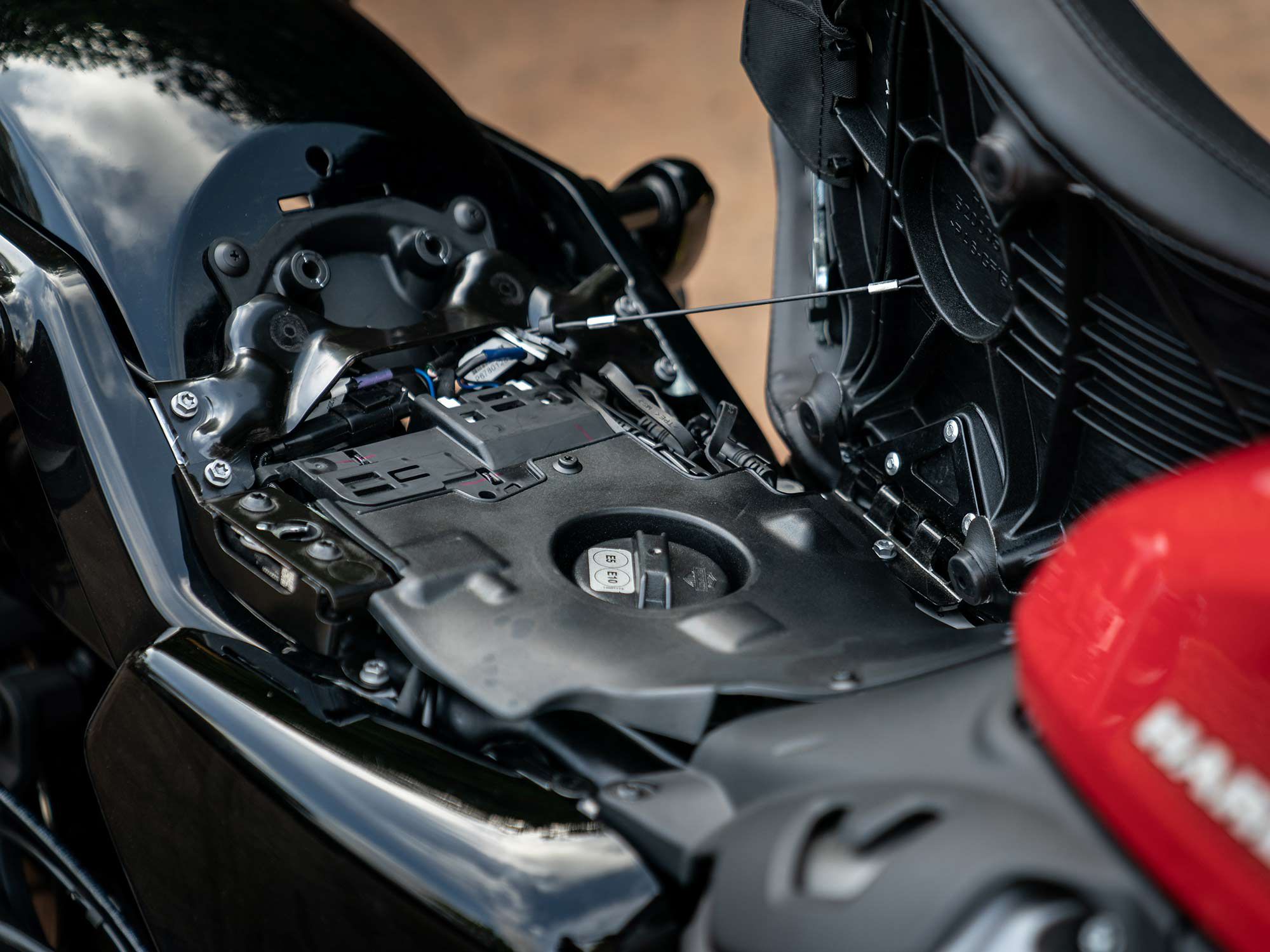
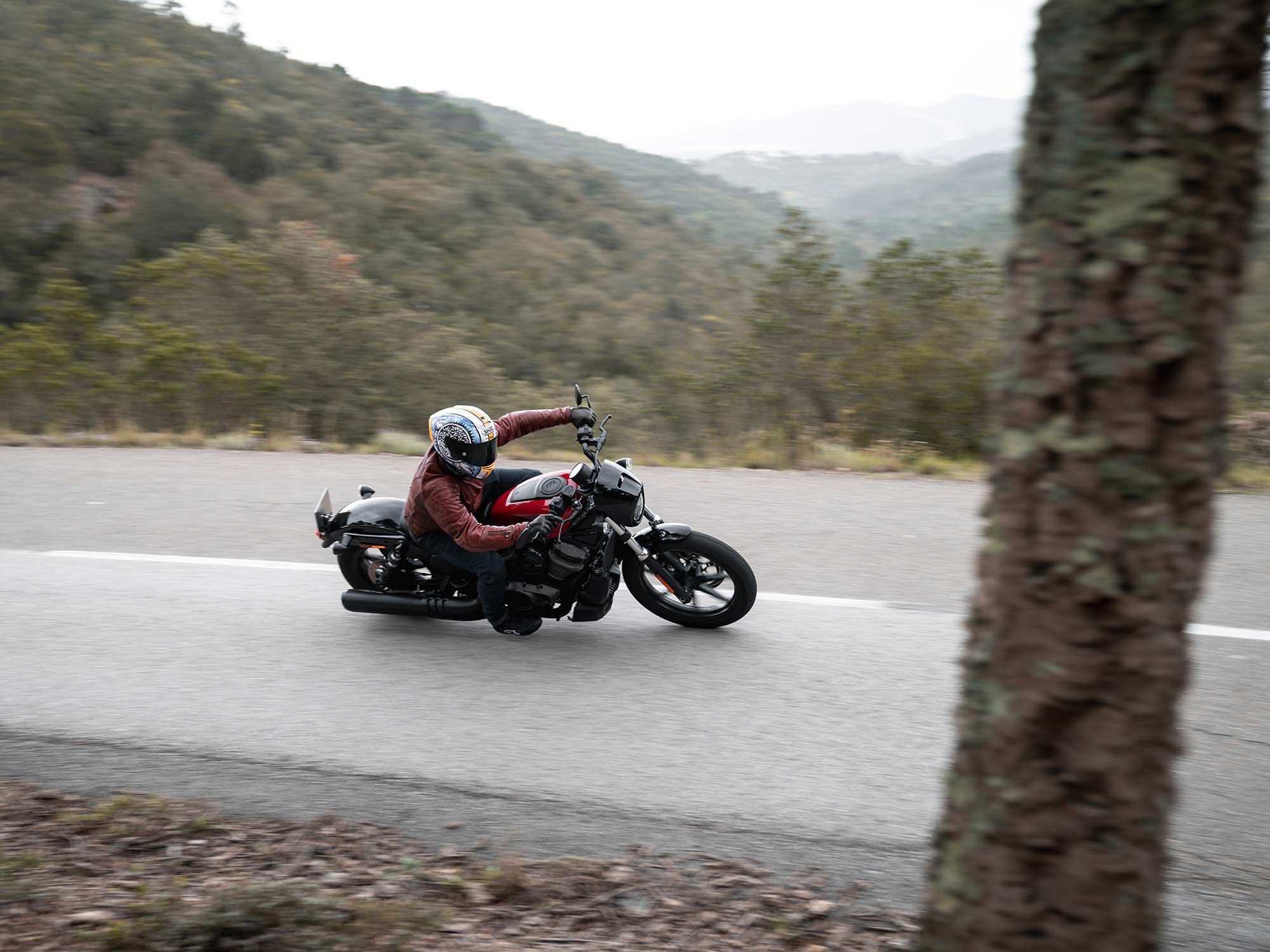
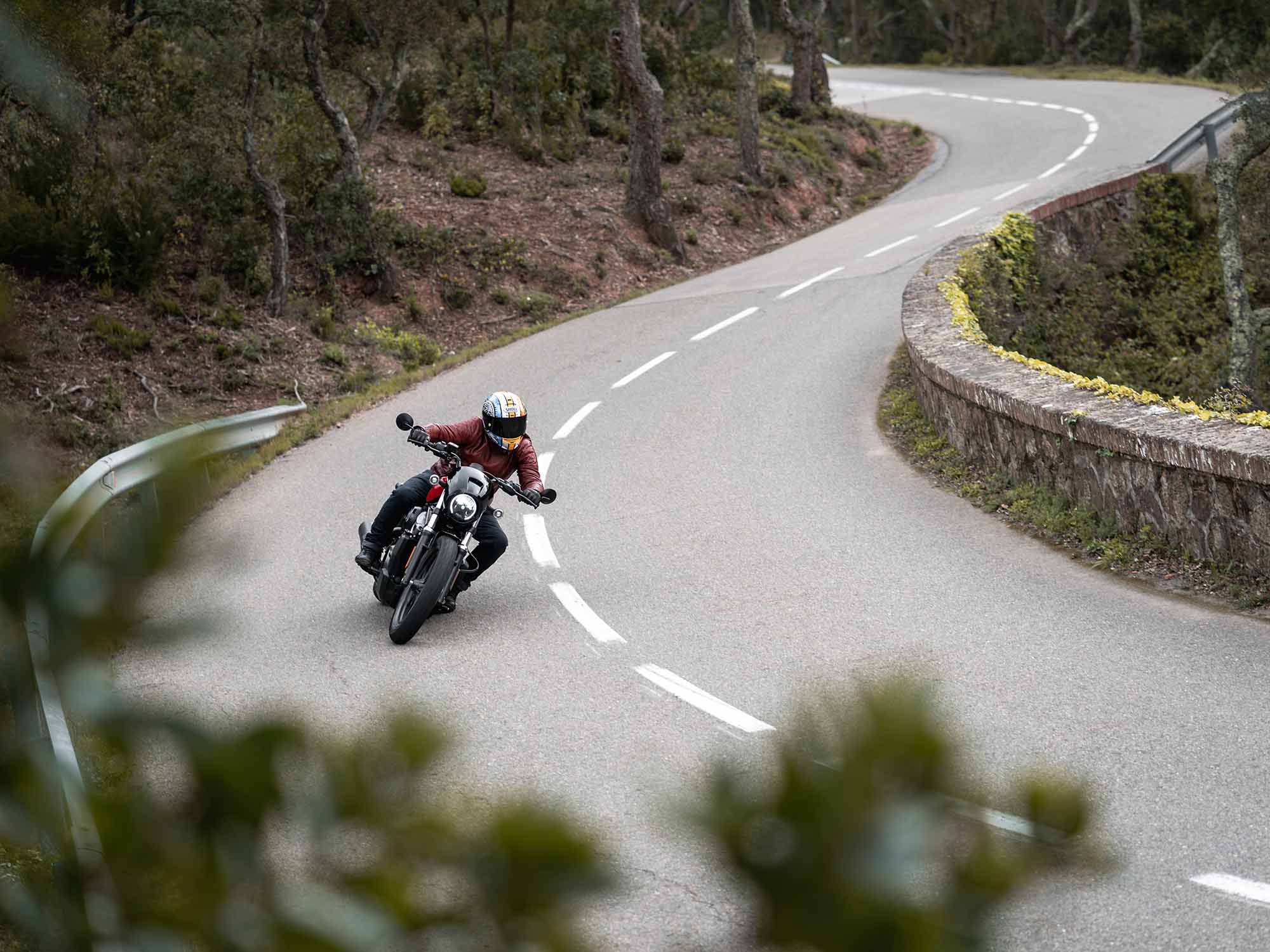
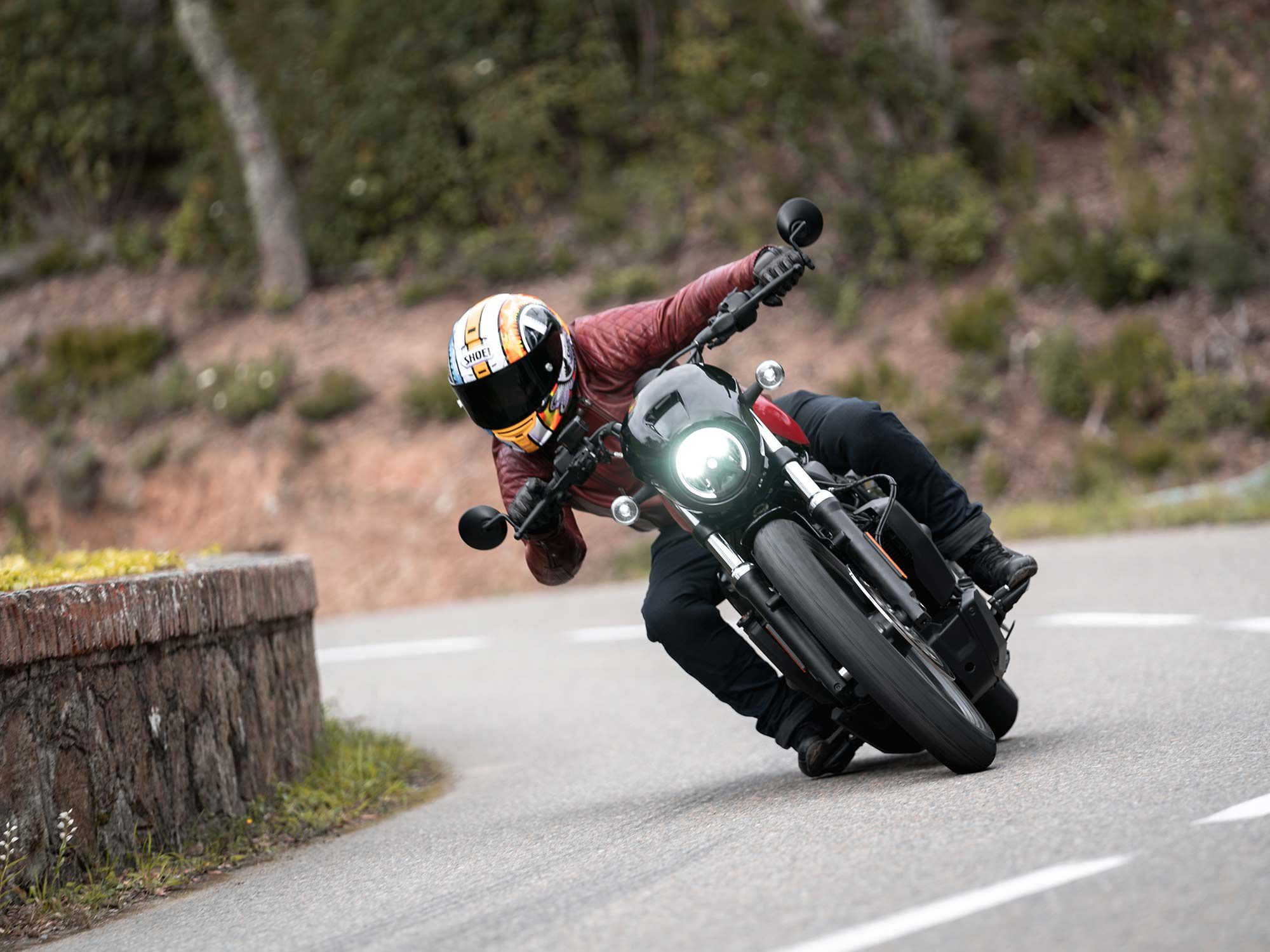
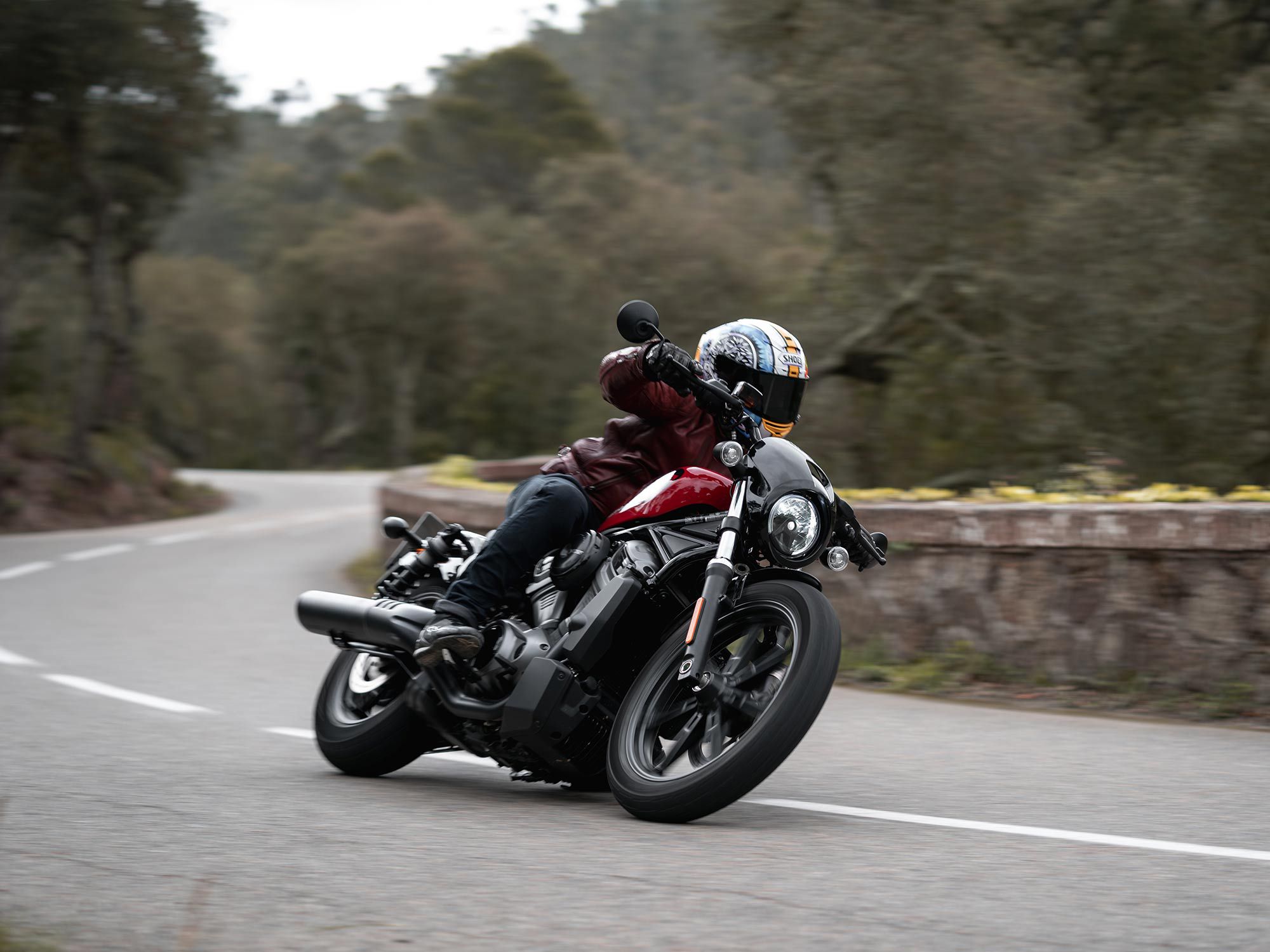
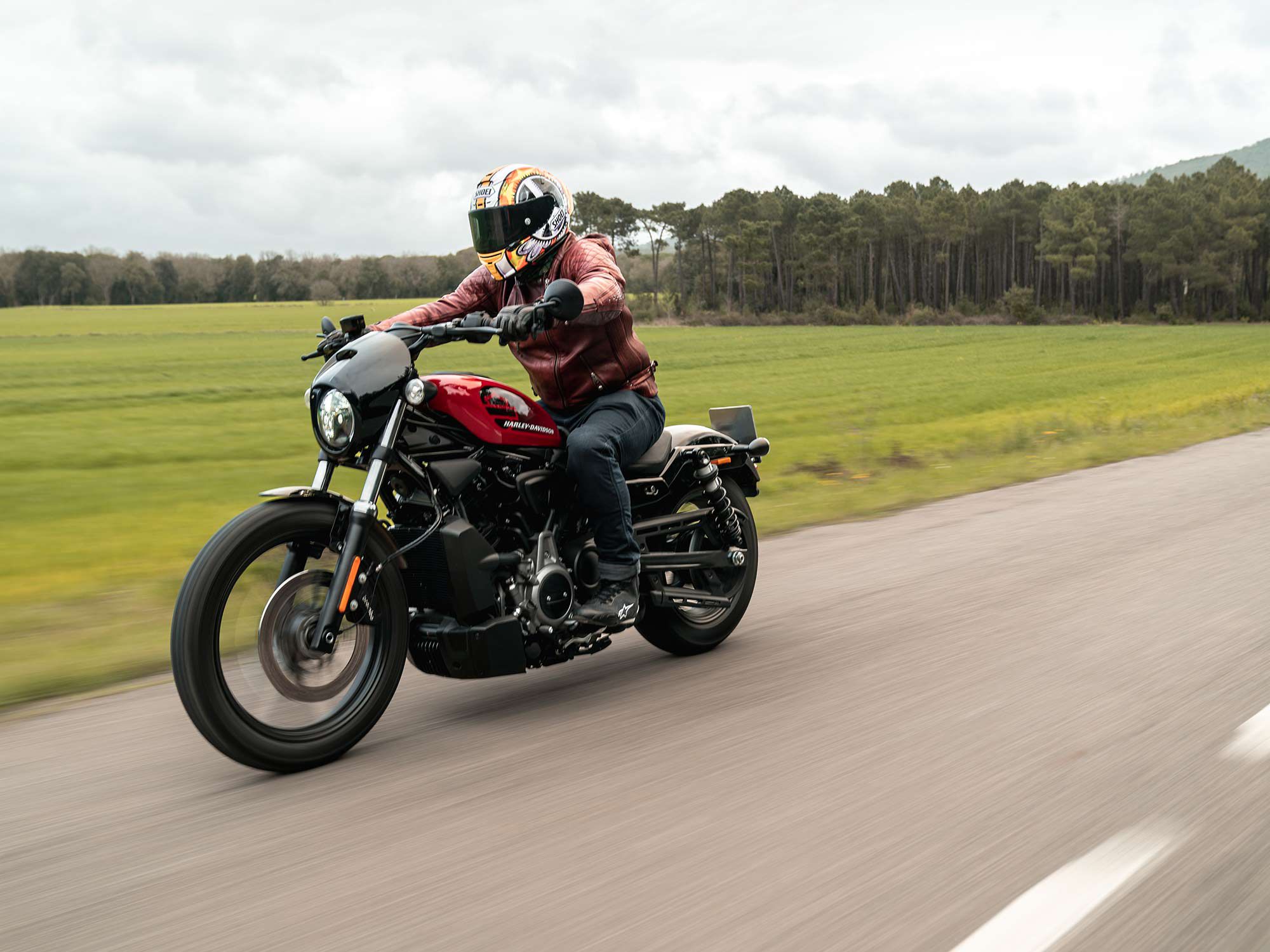
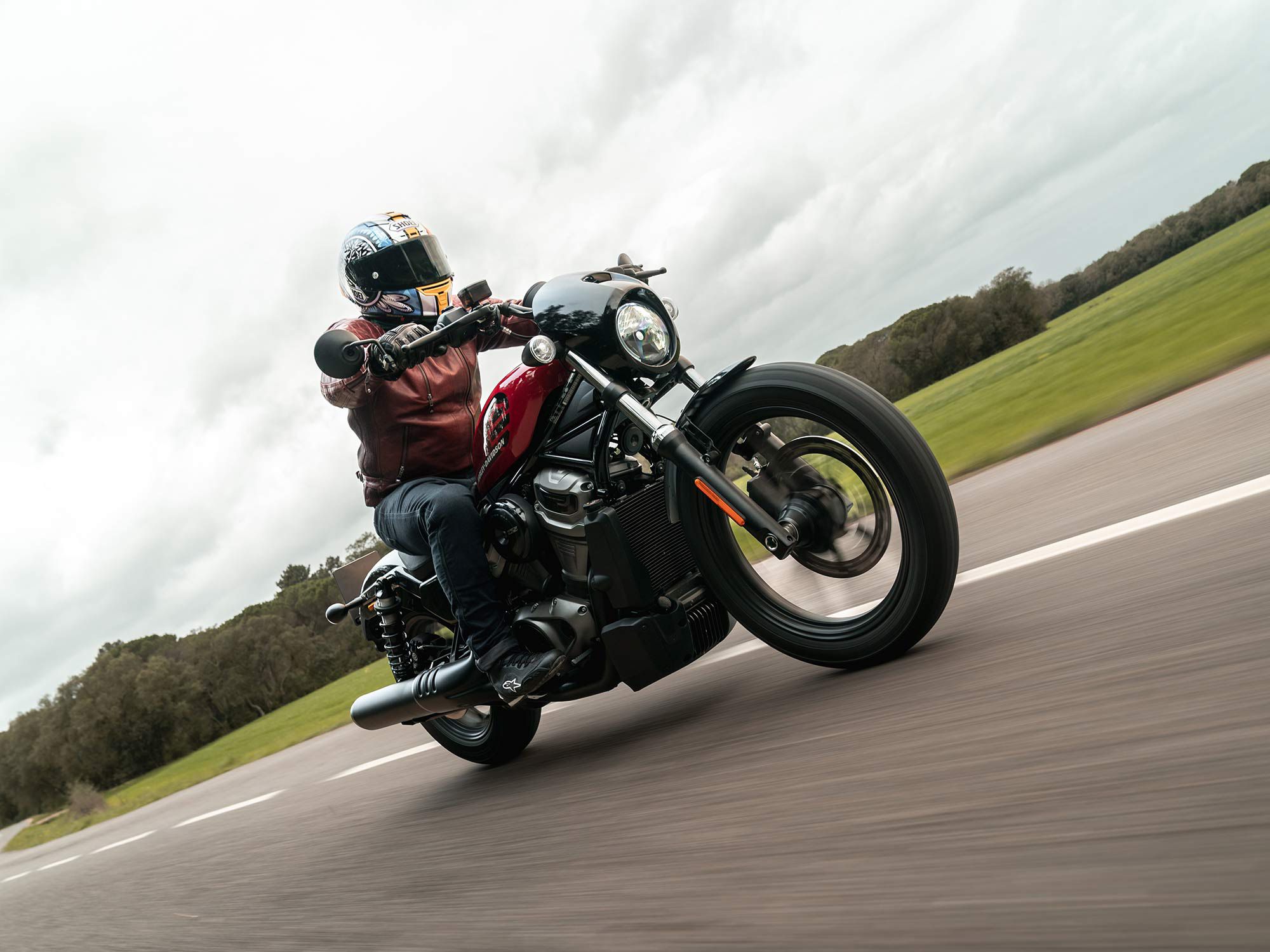
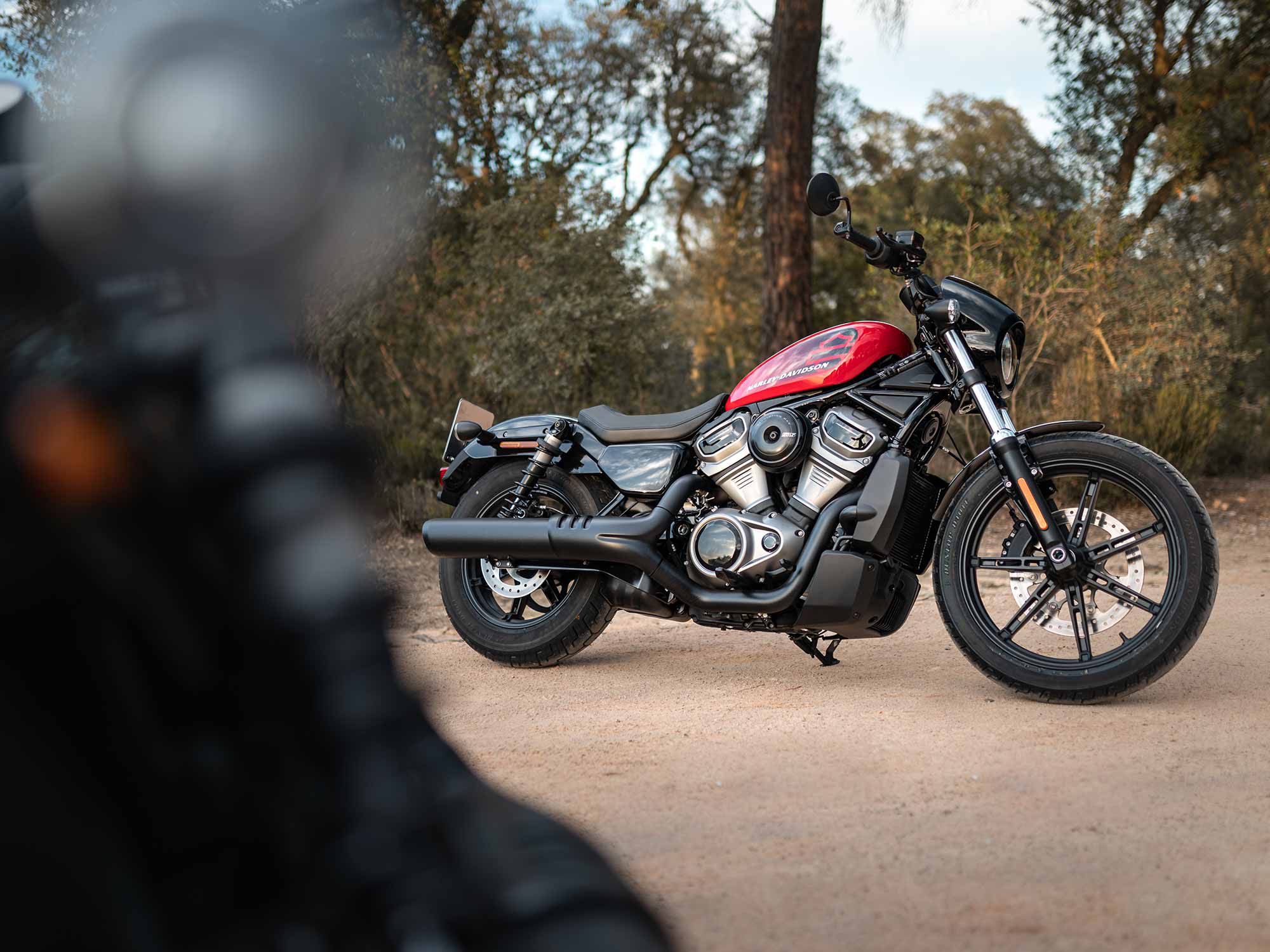
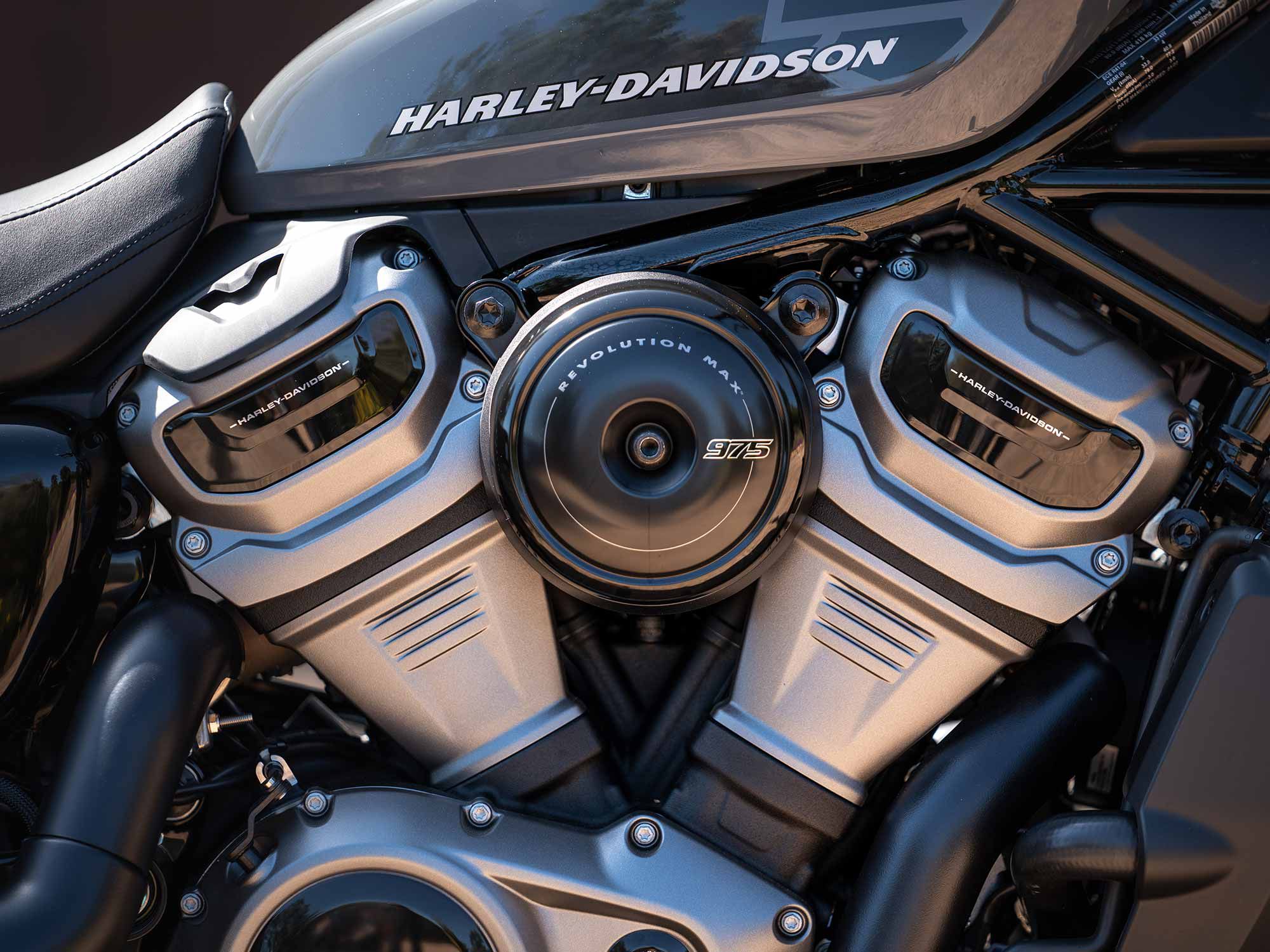
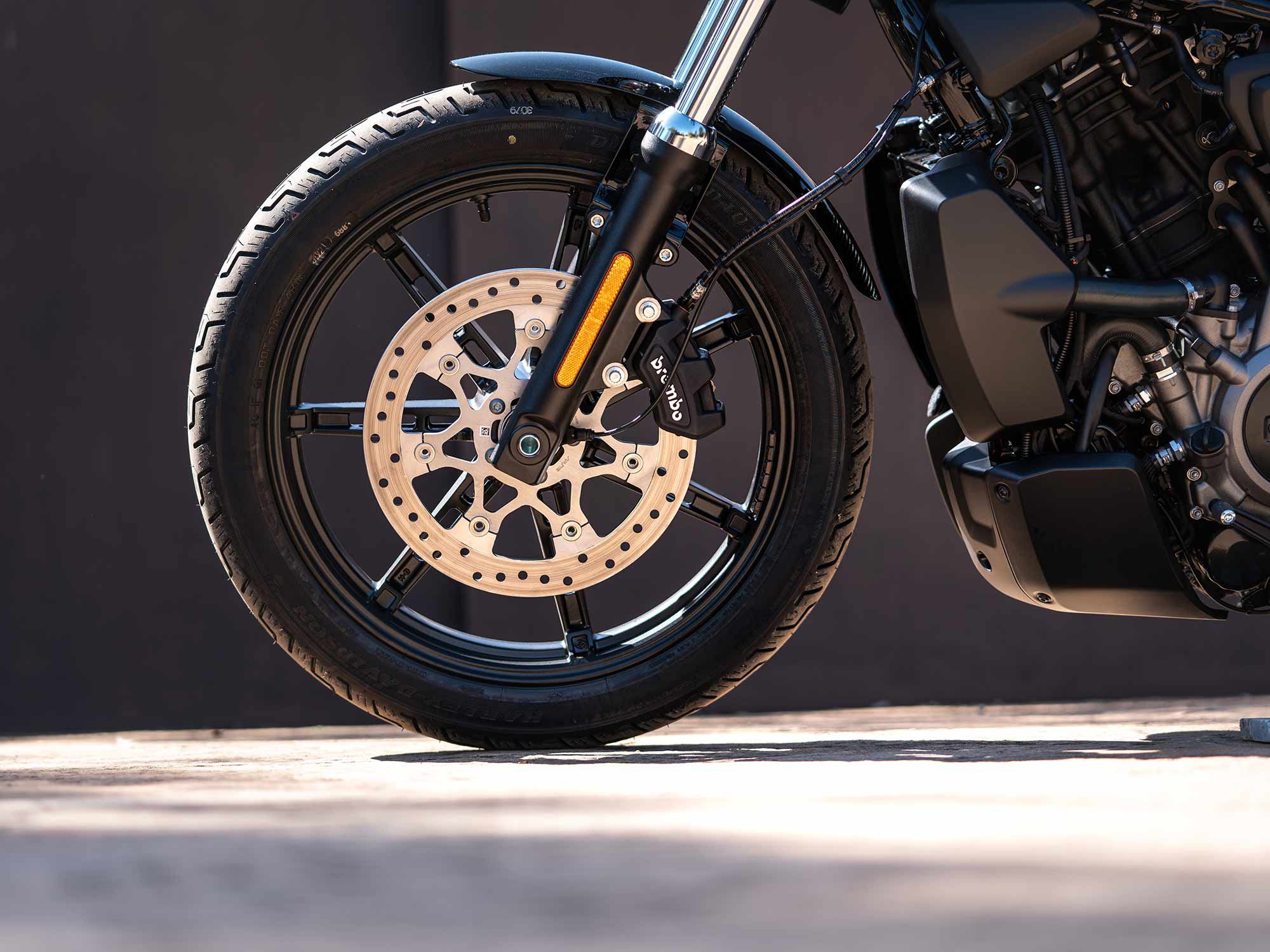
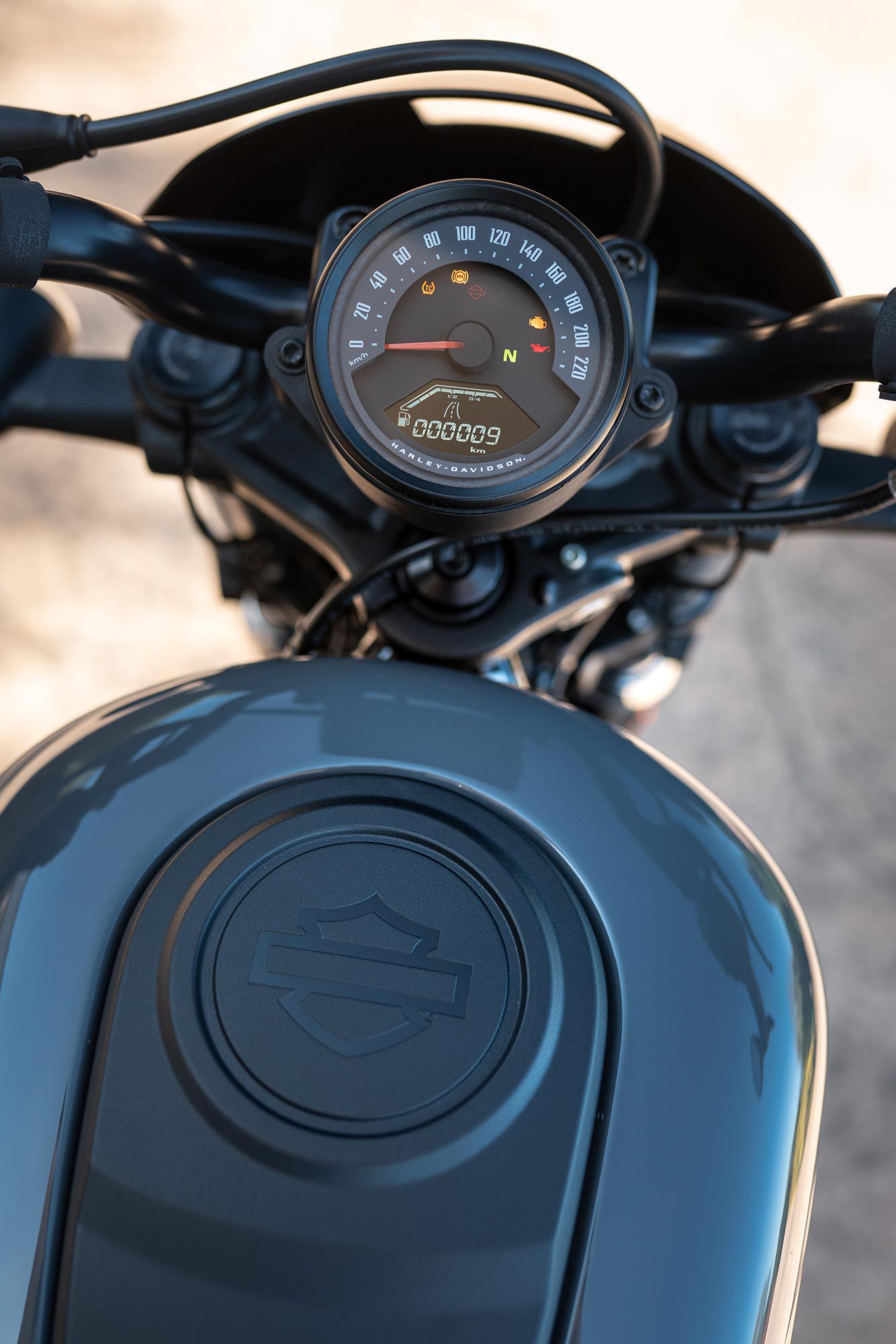
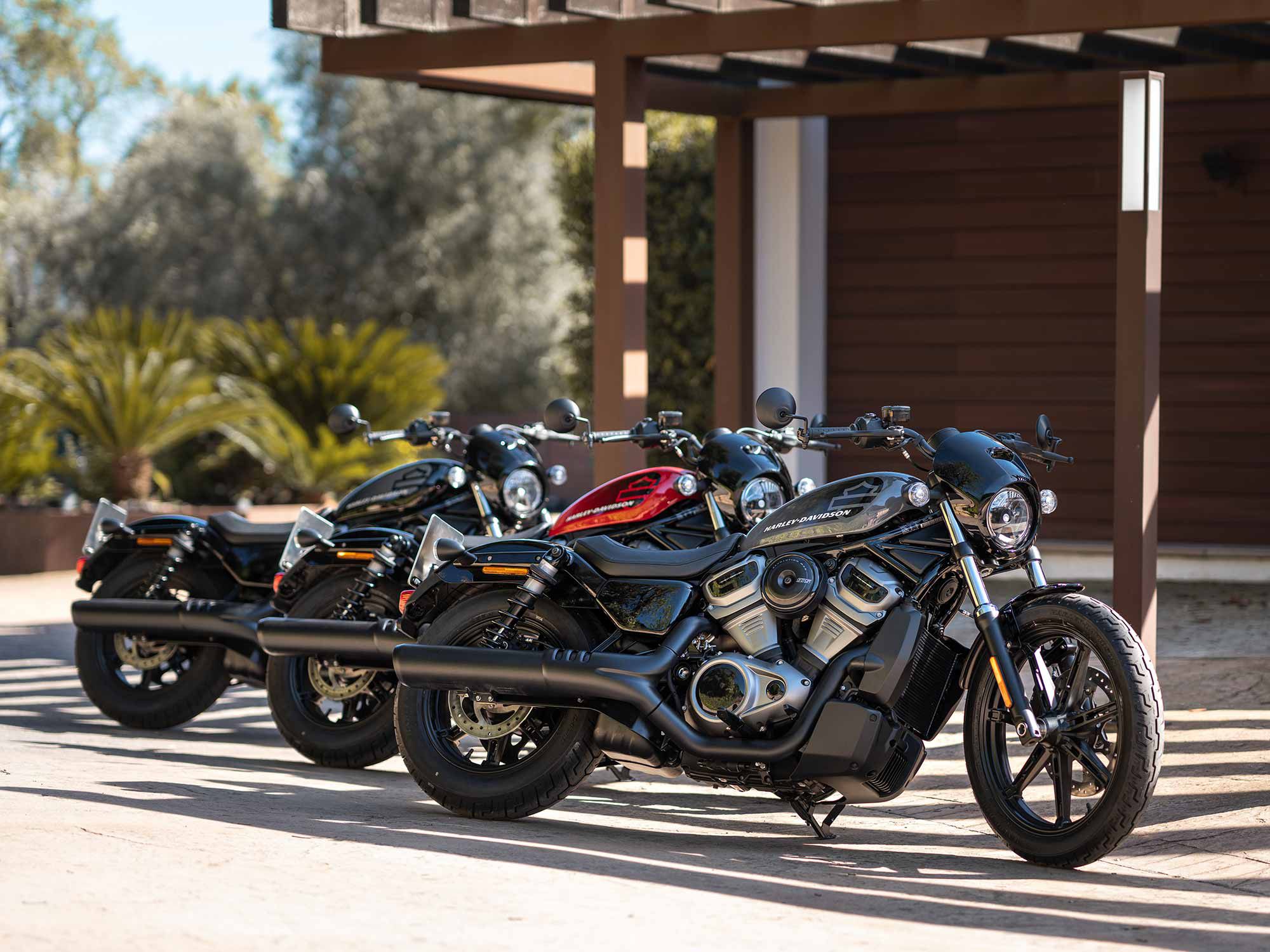
Source: MotorCyclistOnline.com
